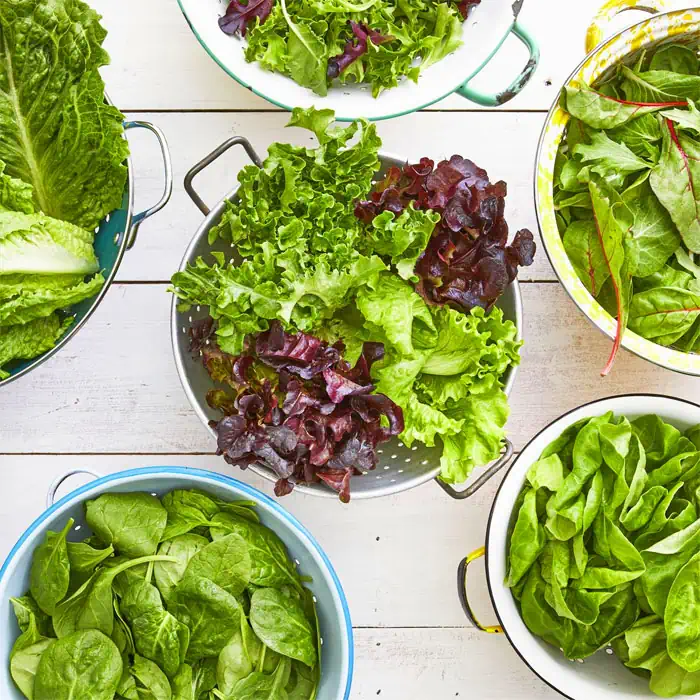 856-691-2497
| Fax 856-692-9007
856-691-2497
| Fax 856-692-9007
 856-691-2497
| Fax 856-692-9007
856-691-2497
| Fax 856-692-9007

From sweet and delicate to robust and crunchy, there's a lettuce for everyone. In this blog post, we'll take a look at 4 of the most popular varieties of lettuce so that you can make an informed decision when choosing what kind to use in your next salad or sandwich.
Iceberg is probably one of the most common lettuces used in salads today. It has crisp, crunchy, slightly firm leaves with a mild, slightly sweet taste, making it a favorite for salads, sandwiches and burgers. Although iceberg doesn't offer much nutritional value compared to other lettuces, it does contain a fair amount of vitamin A, vitamin C, folate and iron. Its neutral taste allows other ingredients to shine through without overpowering them with strong flavors from more nutrient-rich greens such as spinach or kale. Additionally, iceberg's firm texture holds up well against dressings better than softer greens do, which makes it ideal for those who prefer their salads dressed rather than undressed.
Romaine is another popular type of lettuce due its slightly nutty flavor and crunchy texture. It's similar to Iceberg but offers more nutrition, such as higher levels of vitamin A, vitamin C, folate, iron, and potassium. This dark green leafy vegetable also offers dietary fiber for help digestion, and antioxidants which are important for overall health. The versatility of Romaine lettuce means it can be enjoyed both raw as well as cooked. Cooking Romaine lettuce causes its flavor intensity to increase depending on the cooking method used; grilling Romaine lettuce provides smoky notes while sautéing lettuce makes it sweeter after a caramelization process takes place during cooking time.
Butterhead includes two main varieties: Boston Bibb and Buttercrunch. These have soft, delicate leaves and a slightly nutty taste with a delicate sweet flavor reminiscent of butter. Both varieties of Butterhead Lettuce contain Vitamin K, which is essential to bone health, as well as other nutrients such as vitamin A, vitamin B6, calcium, magnesium, phosphorus, zinc, copper, manganese, selenium, and of course fiber. Due to the tenderness of Butterhead lettuce, it needs careful handling to avoid wilting before being served, and is best eaten raw (such as in salads and cold sandwiches) rather than cooked.
Looseleaf Lettuce includes two main varieties: Green Leaf and Red Leaf. Green Leaf lettuce is crisp and mild, while Red Leaf lettuce (which has a bit of a lacy, frilly texture that looks attractive in a salad) has a bit of an earthy note and is more delicate and less crunchy than the green variety. Green Leaf lettuce has more vitamins than the Red Leaf variety, including more vitamin A and vitamins K, as well as more fiber.